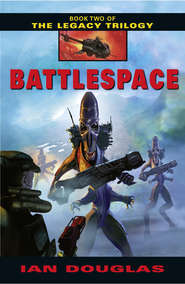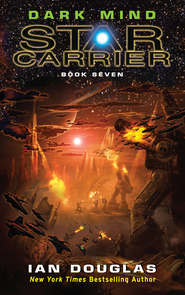По всем вопросам обращайтесь на: info@litportal.ru
(©) 2003-2024.
✖
Singularity
Настройки чтения
Размер шрифта
Высота строк
Поля
Months ago, before the battlegroup had left Earth, members of the Senate Military Directorate had approached DuPont with the suggestion—the order, actually—that he retire from the presidency of the Confederation Senate so that Koenig, the Hero of the Defense of Earth, could be voted into the office instead.
The political union known as the Terran Confederation was not a simple or straightforward democracy, despite what the media and the history downloads would have you believe. More than six hundred senators represented much of Humankind—though the Chinese Hegemony, the Muslim Theocracy, the Peripheries, and a few other smaller groups were not yet represented out of the turbulent, squalling billions of Earth’s population. Perhaps two hundred represented off-world colonies, near worlds like Luna and Mars, more distant out-solar ones like Chiron and Osiris. The president of the Confederation Senate generally was chosen from among the Senate proper by his or her peers, and held the position for six years … but a constitutional crisis, a vote of no confidence, even just the threat of impeachment could recall a Senate president and have him replaced by another. Beneath the democratic exterior, the Confederation government was a dense and labyrinthine tangle of alliances, promises, secret agreements, mutual back scratchings, and outright vote buying, to the point where very few bills actually reached the Senate floor without the vote’s outcome already being known.
DuPont was nearing the end of his term, and frankly, he was going to be happy to step down.
He’d long been aware that certain power blocks within the Senate were planning on replacing him with Koenig. The only question had been whether it would be at the end of the year … or immediately.
The idea, he’d been told, was to put Koenig where the man could be watched and controlled. Koenig was dangerous politically, a loose cannon who could do untold damage to that labyrinth of political entanglements. His leadership at the Defense of Earth had saved the Earth from annihilation and the people loved him, which might make him ambitious. More problematic, there were also logistical considerations. The farther out from Earth Koenig voyaged, the tougher it was to maintain even a semblance of control over him and his force. Better to bring him home and make him president—a position where he could be effectively managed.
Koenig, however, seemed to be playing by an entirely different set of rules. He’d turned down the presidency, pushing instead his extended operations plan, which he called Crown Arrow, an extended carrier battlegroup raid deep into enemy space. Koenig, DuPont thought, just might be one of those utter rarities—a man of absolute integrity who simply could not be bought.
No wonder the Conciliationists within the Senate were in a state of panic.
“So why have you brought me down here?” DuPont asked. “I don’t know what Koenig is doing. No more than you do.”
“You can,” Noyer told him, “sign an executive order directing Koenig to immediately relinquish command to Giraurd, and to return home. CBG-18 is under the direct control of the Senate, not the Navy. When he disobeys the Senate Military Directorate, he’s guilty of dereliction of duty. If he disobeys you, your direct order, it’s treason.”
“And how do we get the order to him?” DuPont asked. “If we don’t know where the fleet is, or where it is going?”
“Through a small fleet of mail packets,” Suvarov told him. As he spoke, the 3-D star map returned, this time with bright blue points of light scattered among the stars. “AI piloted. We have the Alphekkan Directory, after all, as well as copies of his avatar. And we can guess what targets might be of particular interest to him.”
“Ah.”
The Alphekkan Directory had been included with Koenig’s after-action report. It was a list taken from the wreckage of the immense alien space-going factory designated A1-01, including more than two hundred star systems in the general vicinity of Sol that were of interest, in one way or another, to the Turusch, a major Sh’daar client race. Those systems were pinpointed now in blue on the map. A few were relatively close—the nearest perhaps a hundred light years from Earth.
The rest …
The trouble was that the term “general vicinity of Sol” was misleading, at least from the human perspective. Until Koenig had taken CBG-18 beyond the boundaries of human space, no human, no human ship, had ever ventured farther than sixty-some light years from Earth.
And one of the places listed in the recovered directory was almost certainly the Lagoon Nebula … some five thousand light years away.
Five thousand light years. A battle fleet leaving Earth at the best possible interstellar velocity would take more than seven years to get there. DuPont shook his head. If Noyer and the other Conciliationists were unhappy at the problems of command and control of a fleet at Alphekka, a mere seventy-two light years out, how would they deal with a distance seventy times greater?
Such inconceivable gulfs of space.
That, DuPont thought, was what he disliked most about this place, this simulation of nearby interstellar space in a presentation guaranteed to put Humankind in its place. The Terran Confederation was a wood chip adrift on the galactic sea … a few hundred populated worlds against … how many within the Sh’daar alliance? A million? A hundred million?
No one knew. What was known was that the Sh’daar dominated such a vast swath of the galaxy, that they controlled so many technic civilizations, that the Terran Confederation’s chance of victory in this lopsided war were exactly zero. For the past decade there’d been pervasive rumors that human states not yet members of the Confederation—the Chinese or the Islamic Theocracy in particular—might be hoping to cut a separate peace with the Sh’daar.
Hence the political grouping within the Confederation Senate unofficially known as the Conciliationists. Defeat by the Sh’daar Empire and its allies meant utter destruction, quite possibly extinction for the human species. If a face-saving means could be found to agree to Sh’daar demands, Earth would be saved and, quite possibly, the power structure of the Terran Senate could be saved as well, with those states that weren’t full members folded into the Confederation with a minimum of popular unrest.
That, at least, was Noyer’s hope, and the hope of the senators who routinely voted with her. The problem with the Conciliationist program, though, was a few of the old democracies—the United States of North America in particular, with its outdated traditions of independence and individual liberty.
And Koenig and the heart of his battlegroup were USNA. No wonder Koenig was mistrusted, even feared, by Noyer and her followers. The North American Union had never been comfortable with its role as one of the founders of the Confederation; too many of its citizens still longed for their old glory days … as independent Canadians, Mexicans, Guatemalans, or as citizens of the United States of America.
He wondered what had happened to Giraurd. Had he followed Koenig into deep space? Had there been a fight between loyalist and mutinous fleet elements?
DuPont didn’t think Koenig was capable of actually killing the man in order to avoid relinquishing his command … but he had once thrown a Senate political liaison off his bridge. He was a superb military leader … and a very poor subordinate.
“I’ll sign the order,” DuPont said. “But … you’re going to have to find the man to pass them on, and I have a feeling that you’re going to have some trouble there. There are a lot of stars out there, and he has a very long head start.”
“We will find him,” Noyer said. There was bitterness behind the words. “We will find Koenig if we have to mobilize half of the remaining fleet to do so! He will be brought to heel!”
The myriad stars scattered across the interior of the planetarium dome seemed to mock them all.
TC/USNA CVS America
Kuiper Belt, HD 157950
98 light years from Earth
1320 hours, TFT
The star carrier America dropped out of the grav-twisted dimensions of Alcubierre space in a characteristically intense burst of photons, a dazzling flash of energy crawling outward in all directions at the speed of light. If there were technically accomplished residents of this star system, they would soon know of the arrival of the fleet.
In fact, it was unlikely that anyone else was here. Koenig and his advisors had chosen the system carefully. They weren’t looking for combat, but for a chance to refuel.
The star was a close double, the brighter member of the pair a yellow-white F3V sun listed in the star catalogues as HD 157950. From Earth, it had a visual magnitude of 4.5—a faint and unremarkable star in the constellation of Ophiuchus. It possessed a planetary system that was young and still chaotic; a gas giant the size of Neptune circled in close, a so-called hot Jupiter, with a plume like the tail of a comet streaming out behind it away from the sun. Farther out, chunks of ice drifted in an extended, ragged disk, invisible to the naked eye, but glowing faintly at infrared wavelengths.
“Fifteen other ships have emerged so far, Admiral,” Commander Benton Sinclair, America’s tactical officer, told him. “Now sixteen. The Abraham Lincoln just came through.”
“Very well.”
The wait this time was particularly agonizing. How many more would be coming through?
The original battlegroup, CBG-18, had lost five of its thirty-one capital ships at the Battle of Alphekka, plus two more so badly damaged that they’d been left behind to await the arrival of support and repair ships from Earth. Shortly after the battle, forty-one more warships had arrived, reinforcements dispatched by the Confederation’s Joint Chiefs of Staff. Of those forty-one, twelve were USNA ships, a battlegroup formed around the star carrier Abraham Lincoln. Nine were Chinese, the Eastern Dawn expeditionary force, led by the carrier Zheng He.
The remaining twenty vessels were a Pan-European task force commanded by Grand Admiral Francois Giraurd on board the star carrier Jeanne d’Arc.
Technically, all of the ships except for the Chinese vessels were Confederation Navy, but … there was a problem, a big problem. Koenig wasn’t sure yet how it was going to play out.
“The Cheng Hua and the Haiping have both just materialized,” Sinclair announced. “Range twelve light minutes. And there’s the Zheng He. …”
He’d been expecting the Chinese and the North Americans to follow the battlegroup into the Abyss. The question remained: What would the Pan-Europeans do?
After the Battle of Alphekka, CBG-18 had remained in the system, refitting, re-arming, and consolidating. Grand Admiral Giraurd had brought his flagship alongside the America and told Koenig that he was taking command of the entire fleet, and that the fleet would be returning to Earth.
And Koenig had refused the order.
Giraurd had threatened to open fire as the fleet elements loyal to Koenig had begun accelerating out-system, and for a nerve-wracking few hours, the Pan-Europeans had pursued the rest of the battlegroup. They’d never quite pulled into range, however, and, once the rest of the battlegroup had begun dropping into Alcubierre Drive, there was a good chance that Giraurd had ordered his contingent to break off the pursuit.
But Giraurd knew Koenig’s plan, knew the coordinates where they would be emerging. If he wanted to, he could be moments away from Emergence … and Koenig would be looking at the very real possibility of either capitalization or mutiny.
Which would it be?
“Admiral!” Sinclair called. “Another star carrier emerging, range fifteen light minutes! Sir, it’s the Jeanne d’Arc!”
Giraurd had followed them after all.











